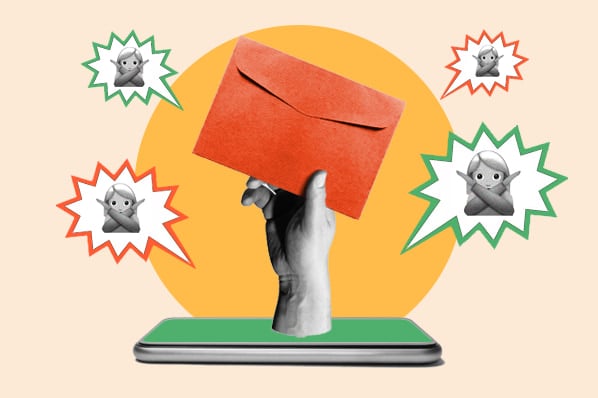
It takes a lot of energy to be creative. Consider that Richard Strauss only spent approximately three hours per day composing music. The other 21 hours? Consumed by sleeping, reading, drinking tea, writing letters, and taking strolls.
Because we just can't have our creative juices flowing 24 (or even eight) hours per day, sometimes shortcuts to sales follow ups are necesary. Yes, it would be ideal to write each sales email from scratch and have it be 100% customized to the receipient. But just thinking about that makes my head hurt. Enter the customizable template.
However, when too many people start using the same template and nixing the customization, it just becomes spam. The checking in email is a prime example of this. How many times have buyers recieved an email or call that starts with "I'm just checking in ... "? A lot. That means that you're sending the same message as everyone else, which might be the cardinal sales sin.
To stand out from the crowd while still conserving time and brainpower (salespeople do have to write a lot of follow up emails after all), consider the following options.
How to Write a Checking In Email
1) Hit resend.
There's really no point in sending a follow up email if the buyer didn't open your original email. With a (free) tool in place that can track whether and when your recipent views your message, you can judge whether a "checking in" email is even necessary. After all, if they never read your first email ... why not just send it again? That way you don't waste a well-crafted message or your buyer's time with an irrelevant follow up.
2) Jump in.
Skip the "just checking in" and get right to your point. Was the purpose of your first email to introduce your company to the buyer? Then do it again. Did you want to set up an appointment? Kick off the message that way. Were you commenting on a trigger event? Insert another remark. Don't even reference the fact that this is the second email you're sending -- just dive into your purpose as if it's the initial outreach.
3) Try a different channel.
A new channel gives you the opportunity to start up the conversation all over again, which makes a follow up irrelevant. If you weren't successful connecting with your prospect via email, send a LinkedIn message, or comment on a status or post they shared. Don't assume your buyer will make the connection between your email and a message on an alternate platform. Odds are, they're inundated with emails, and a LinkedIn comment or tweet might be the first encounter with you that sticks in their mind.
4) Share something valuable.
At its core, the entire concept of checking in is a bit selfish. You're asking for your buyer's time without offering anything in return -- except for maybe a vague promise of "help." To avoid violating the sales mantra "always be helping,"never say "just touching base" or anything similar -- make good on your offer by sending along interesting articles or recommending social media discussions or groups. This way, you'll stay on their radar while proving yourself to be as helpful as you claim to be.
5) Ask a question.
Traditional checking in messages are usually about the salesperson's needs, not the prospect's. Flip this around by doing away with the "just checking in" phrase and replacing it with a question. After all, a true follow up aims to understand what's going on in the recepient's world and get a handle on any recent developments. Show your genuine interest by asking about a project the buyer is working on, or a challenge the company is dealing with.
6) Wait for the right time.
This one may be the most frustrating for salespeople, but bear with me. Selling today should be all about your prospect, not about your company. So instead of pestering buyers and forcing them to engage with you when you'd like them to, consider laying low until a trigger event creates a good time for them. After a leadership change or new branch annoucement, they'll be much more receptive to your pitch because it will be more relevant to them. And if you haven't spent the past year bugging them about when you can get on their calendar, you'll stride into the relationship with a spotless reputation.
Still want ideas? Give these additional techniques to improve checking in emails a spin.








.jpg)


